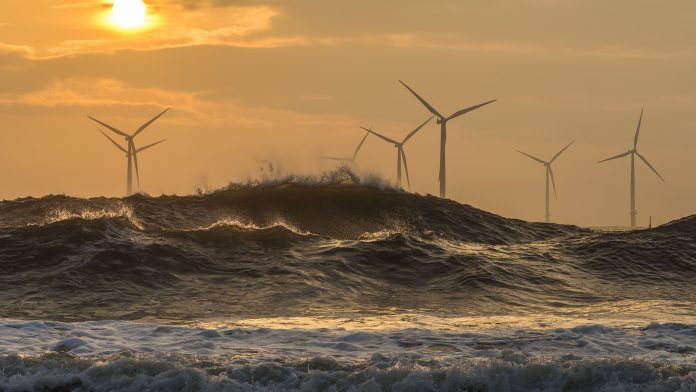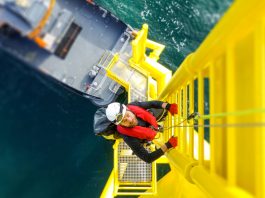Limerick Wave’s mission is to transform the mechanical power of sea waves into electrical power for general consumption.
The prospect of generating electricity for sea waves is a real one. When we generate electricity from sea waves, we will have a predictable, reliable, and sustainable electricity supply. This predictable source of renewable energy allows for the permanent decommissioning of existing traditional electricity generation sources from fossil and nuclear fuels. 70% of our planet is covered by moving sea waves. The total wave energy resource by far exceeds the global consumption of electricity.1
In the main, companies involved in the wave energy conversion work autonomously and do not share technology; we have not learned from the wind industry, where technology was shared and, as a result, great progress has been achieved.
At Limerick Wave, we have identified the link in the wave energy conversion supply chain that is not fit-for-purpose, namely the Power Take Off (PTO) technology. Existing Wave Energy Converts (WECs) are excellent at capturing the mechanical forces from waves. This is achieved mainly by having one body moving relative to another. Converting this mechanical movement to electricity is the challenge. Sea wave energy is characterised as slow moving with high forces (torque), and to use existing electrical generators we need to turn the rotor at high speed and low torque. It is in this conversion that Limerick Wave have excelled.
Aontreo PTO disruptive technology
Limerick Wave have developed Aontreo PTO disruptive technology which works as a Mechanical Motion Rectifier (MMR). That is, our technology can convert two-way motion into one-way motion (see Fig. 1).
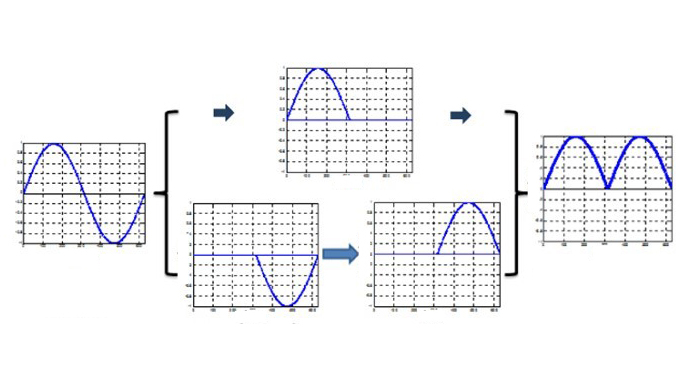
At present, the number one challenge faced by WEC companies in developing their own PTO technology is the ‘end-stop’. This is where the movement of a PTO comes to an end and is typified as the end of the stroke of a hydraulic ram. At Limerick Wave, we have designed our Aontreo PTO technology in such a way that there is no end-stop. The Aontreo PTO technology can facilitate 360-degree movement both clockwise and anticlockwise (see Fig. 2).
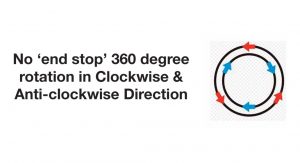
The second challenge facing the WEC companies in developing their own PTO technology is that their PTOs are designed to be rigidly fixed to their WEC. Then, when the WEC becomes compromised due to rough seas etc., so does their PTO technology. The Aontreo PTO technology is not rigidly fixed to the WEC, so if the WEC is compromised the Aontreo PTO technology is still fit-for-purpose.
The Aontreo PTO is designed to move under its own inertia, so if the input stops, the output can keep moving. This is particularly suitable for wave energy conversion considering the massive forces of the waves and their slow movement. The Aontreo PTO is designed to fit onto the pivot point of the moving bodies of a WEC and as such will convert sea power under movement of +/- one degree.
The Aontreo PTO operates with a single turning pair through ‘one degree of freedom’, where the PTO of a wave-activated body is most efficient. Otherwise, the wave-activated body will always choose to move in the direction of least resistance and thereby avoid PTO interaction. Furthermore, limiting the Aontreo PTO motion to one degree of freedom also reduces the complexity of the PTO system and optimises its efficiency and facilitates its control as the motion of the wave activated body is known (see Fig. 3).
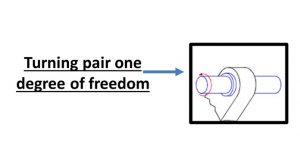
The Aontreo PTO technology is also very robust, in that it can facilitate the change of input direction under conditions of ‘low speed/high torque’ and ‘high speed/low torque’ without losses to the output. It is made up of proven existing technologies and its patent is in how these technologies are combined. These proven technologies are working in machines in industry every hour of every day. The number of moving parts in the Aontreo PTO is very low, adding to its reliability and making our PTO technology scalable – whatever size the WEC is, we can design an Aontreo PTO to suit.
The Aontreo PTO technology will convert the two-way mechanical movement of the WEC into one-way rotation. This high torque slow moving rotation velocity will be increased using an existing planetary gear box technology. The planetary gear box will be designed so that it will not incur referred inertia by keeping the gear ratio below 1:8 at each stage. The rotation will then be moving with high velocity and low torque, which is the ideal condition to rotate existing electrical generators.
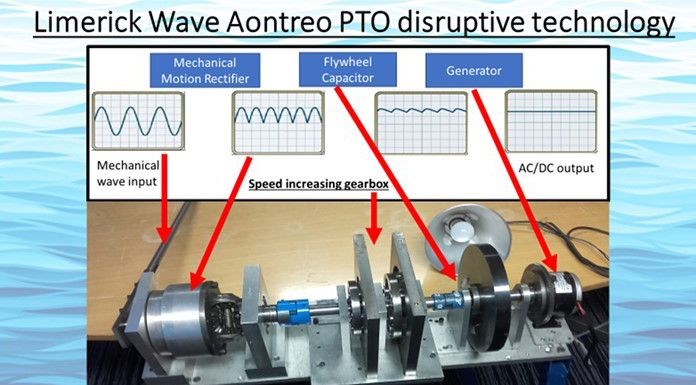
What does Limerick Wave offer WEC developers?
At Limerick Wave, we want to see our Aontreo PTO technology being used by WEC developers, but we do not want WEC developers to take a financial risk on our Aontreo PTO technology. We are so confident in the technology that we are therefore offering to work with WEC developers that are interested in using our PTO technology under an understanding that when the combined WEC and Aontreo PTO technologies become commercially viable we share the financial return. This type of agreement removes the financial risk from the WEC developers and further demonstrates Limerick Wave’s confidence in our Aontreo PTO technology.
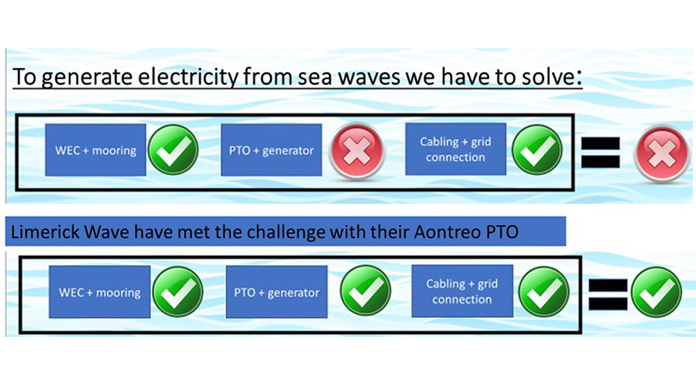
The Limerick Wave Aontreo PTO technology can be used with any WEC technology that has relative motion; that is, two-way motion. That means the Limerick Wave Aontreo PTO technology is applicable to practically all WEC technologies being developed. The Limerick Wave Aontreo PTO technology can use the low velocity and very high toque of sea waves to turn a generator to generate electricity.
References
- Handbook of Ocean Wave Energy, Ocean Engineering & Oceanography Volume 7
Please note, this article will also appear in the seventh edition of our quarterly publication.

